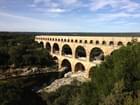Types of Catacombs Tunnels
The extensive underground burial complex known as the Christian Catacombs Tunnels in Rome holds the distinction of being the city's most renowned. Originating in the second century AD, these tunnels served as the final resting place for Christians until the fifth century. Carved into the malleable volcanic rock beneath the urban expanse, they encompass a multitude of graves and tombs. Within these tunnels, intricate frescoes, carvings, and inscriptions adorn the walls, portraying Christian symbolism, depictions of biblical events, and narratives of the martyrs.
Do Checkout & Book: Rome Catacomb Guided Tour With Transfers
The Jewish Catacombs Tunnels in Rome are lesser-known than their Christian counterparts but are no less fascinating. They were created in the second century AD and were used for Jewish burials until the fourth century. The Jewish Catacombs Tunnels contain over 2,000 graves and tombs, and they are rich in Jewish iconography and symbols. The inscriptions on the tombs are written in Hebrew and Aramaic and provide valuable insights into the life and culture of the early Jewish community in Rome.
Must Read: Roman Catacombs
The Pagan Catacombs Tunnels in Rome are the least known of the three types of catacombs tunnels. They were created in the second century AD and were used for pagan burials until the fourth century. These tunnels contain tombs and sarcophagi that are decorated with pagan symbols and motifs, including images of gods and goddesses, mythological scenes, and symbols of the afterlife. The Pagan Catacombs Tunnels are an important source of information on the religious beliefs and practices of the ancient Romans.
Also Book: Catacombs & Crypts Tour with Roman Aqueducts
The Catacombs Tunnels of San Sebastiano are the largest and most well-preserved of the tunnels of the Christian catacombs in Rome. They are named after the martyr Saint Sebastian, whose remains were originally buried in the tunnels. The Catacombs Tunnels of San Sebastiano contain over 150,000 graves and tombs, and they are decorated with beautiful frescoes and mosaics that depict scenes from the Bible and the lives of the saints.
You May Also Book: The Catacombs of San Sebastiano Guided Tour Tickets
The Catacombs Tunnels of Domitilla are one of Rome's oldest and most extensive Christian catacombs tunnels. They were created in the second century AD and were used for Christian burials until the fifth century. The Catacombs Tunnels of Domitilla contain over 150,000 graves and tombs, and they are famous for their beautiful frescoes and carvings that depict scenes from the Bible and the lives of the saints.
Know More: Catacombs Of Domitilla
The Catacombs Tunnels of Santa Priscilla is a lesser-known but equally fascinating Christian catacombs tunnel in Rome. They were created in the second century AD and were used for Christian burials until the fourth century. The Catacombs Tunnels of Santa Priscilla contain over 40,000 graves and tombs, and they are famous for their beautiful frescoes and carvings that depict scenes from the Bible
Book Now: Priscilla Catacomb Tickets
The Catacombs Tunnels of Saint Callixtus are one of Rome's most important and visited Christian catacombs tunnels. They were created in the second century AD and were used for Christian burials until the fifth century. The Catacombs Tunnels of Saint Callixtus contain over 500,000 graves and tombs, and they are decorated with beautiful frescoes, mosaics, and sculptures that depict scenes from the Bible, the lives of the saints, and the martyrs
Click Here to Book Now: Official Guided Tour of the Catacombs of St Callixtus
The Catacombs Tunnels of the Via Latina are a lesser-known but equally impressive Christian catacombs tunnel in Rome. They were created in the third century AD and were used for Christian burials until the fifth century. The Catacombs Tunnels of the Via Latina contain over 150,000 graves and tombs, and they are decorated with beautiful frescoes and carvings that depict scenes from the Bible and the lives of the saints.
Book Catacombs Tickets & Tours
FAQs
What are the Catacombs Tunnels in Rome?
The Catacombs Tunnels in Rome are a series of underground tunnels and passageways that were used for burial purposes by the ancient Romans. They are located throughout the city, and they contain tombs, niches, and sarcophagi that were used for the burial of the dead.
How many Catacombs Tunnels are there in Rome?
There are over 40 Catacombs Tunnels in Rome, although not all of them are open to the public. The most famous and well-known Catacombs Tunnels are the Christian Catacombs, which were used for the burial of early Christian martyrs and saints.
Who used the Catacombs Tunnels in Rome?
The Catacombs Tunnels in Rome were used by several different groups, including early Christians, Jews, and Pagans. The Christian Catacombs were the most widespread and well-known, as they were used for the burial of early Christian martyrs and saints. The Jewish Catacombs were used for the burial of Jewish people, and the Pagan Catacombs were used for the burial of non-Christians.
What can you see in the Catacombs Tunnels in Rome?
The Catacombs Tunnels in Rome contain a variety of tombs, niches, and sarcophagi that were used for the burial of the dead. They are also decorated with beautiful frescoes, mosaics, and sculptures that depict scenes from the Bible, the lives of the saints, and the martyrs. Visitors can also see the remains of early Christian churches and chapels that were built in the Catacombs Tunnels.
Suggested Read: St. Peter's Basilica History
Are the Catacombs Tunnels in Rome open to the public?
Yes, many of the Catacombs Tunnels in Rome are open to the public and can be visited as part of a guided tour. However, it is important to note that some of the Catacombs Tunnels are only open to researchers and scholars, and others may have limited hours of operation. Visitors should also be aware that some of the Catacombs Tunnels may be closed temporarily for conservation or restoration work.































